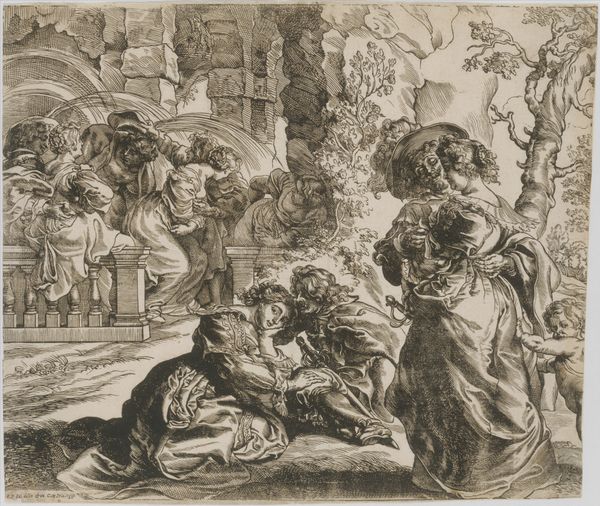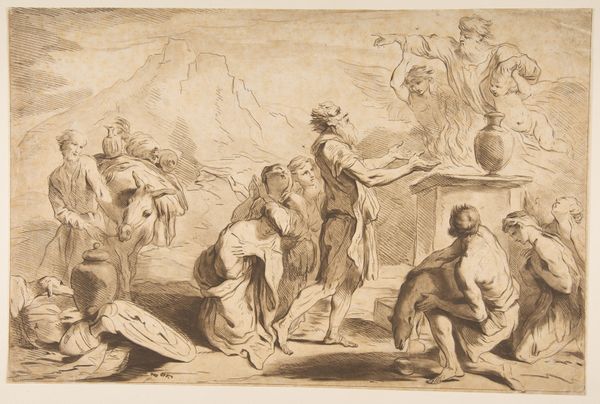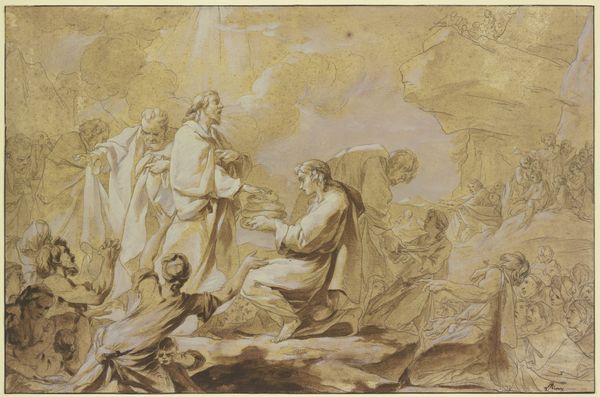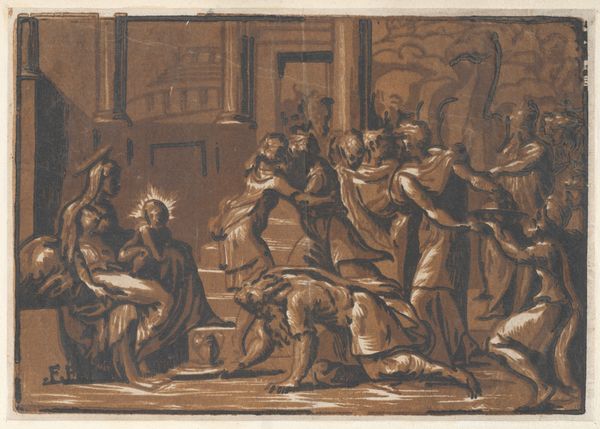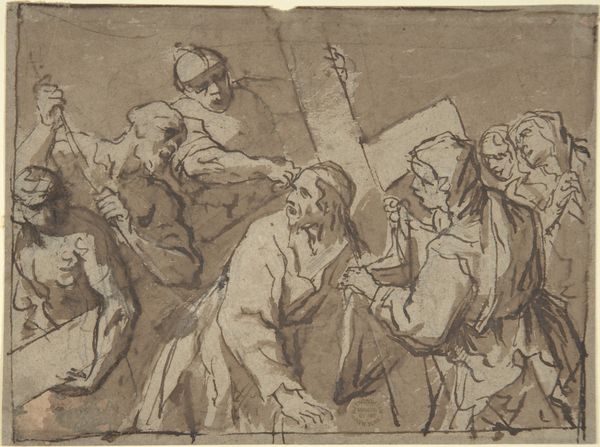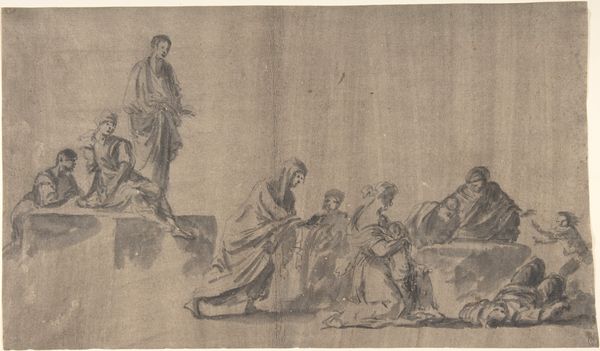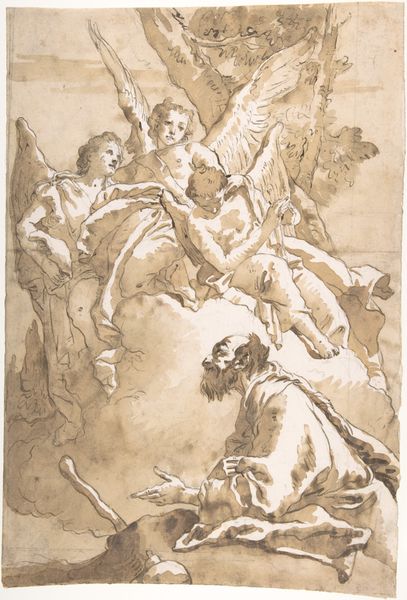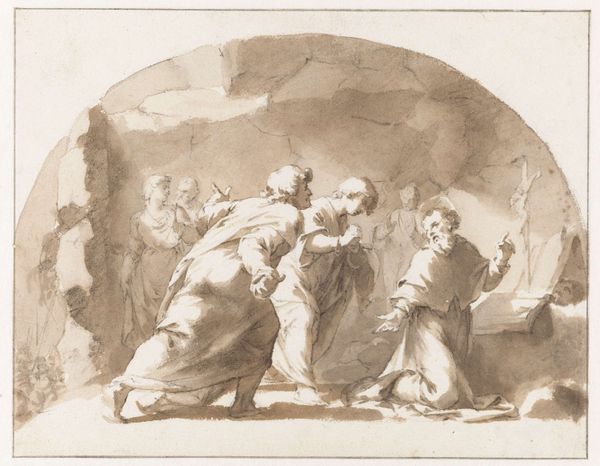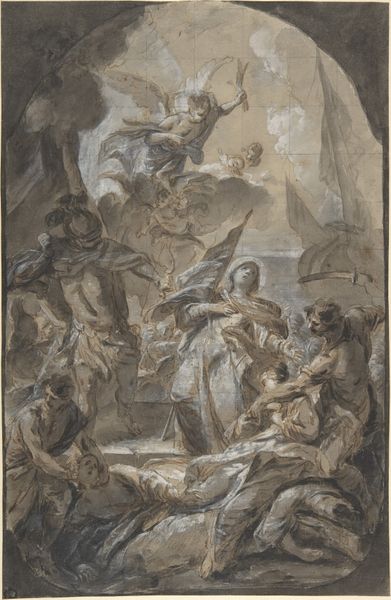
drawing, print, gouache, paper, ink
#
drawing
#
narrative-art
#
baroque
# print
#
gouache
#
classical-realism
#
charcoal drawing
#
figuration
#
paper
#
11_renaissance
#
oil painting
#
ink
#
history-painting
Dimensions: 457 × 545 mm
Copyright: Public Domain
Curator: This dynamic drawing, "Abduction of Helen," is attributed to Guido Reni, dating from after 1627. It's currently held here at The Art Institute of Chicago. Editor: Immediately striking. The figures are caught in mid-motion, giving the piece an almost frenzied, unsettled energy, heightened by the monochromatic scheme and fluid lines. Curator: Reni uses ink and gouache on paper to depict this pivotal moment from Greek mythology. The subject, Helen's abduction by Paris, was a popular theme in Baroque art, seen as a symbolic act that ignited the Trojan War. How does it fit with broader cultural themes? Editor: It aligns with the Baroque interest in dramatic narratives and heightened emotion, but consider the context. Reni, active in Bologna, worked in a circle steeped in classical learning and humanist ideals. The image thus reflects both courtly aesthetic of conflict and the complex web of socio-political power struggles of its time. It's interesting to think about how visual depictions shape historical understanding. Curator: Precisely. Observe the composition—Reni’s deliberate use of diagonal lines amplifies the sense of movement and chaos. The figures, while rendered with classical grace, appear caught in a swirl. Semiotically, what are we reading into the elements chosen and how they're assembled? Editor: Absolutely, but its reception mattered immensely. Depictions of Helen's abduction served as both cautionary tales and celebrations of masculine conquest and beauty. Commissioned pieces likely performed specific social or political functions for their owners. I'm keen on the cultural impact, and how historical perspectives frame a specific scene like this. Curator: Undoubtedly. The ambiguity of Helen's expression invites scrutiny—is she resisting or complicit? Also, the presence of Cupid suggests a romantic interpretation, muddying any simplistic notion of violence. How are the forms themselves helping build that tension? Editor: The blurring between love and violence that’s palpable in this piece challenges the viewer to interrogate what this all stands for! What narrative is told, and perhaps more importantly, what is its goal in public consumption? It gives food for modern thought, wouldn't you agree? Curator: I would. Ultimately, this "Abduction of Helen" becomes a potent combination of classical ideals, and turbulent aesthetics of its time, prompting introspection in how it blends history, form, and iconography. Editor: I'm intrigued. "Abduction of Helen," far from being merely a depiction of a mythological event, presents as a vibrant snapshot of power, representation and influence across cultural lenses.
Comments
No comments
Be the first to comment and join the conversation on the ultimate creative platform.

